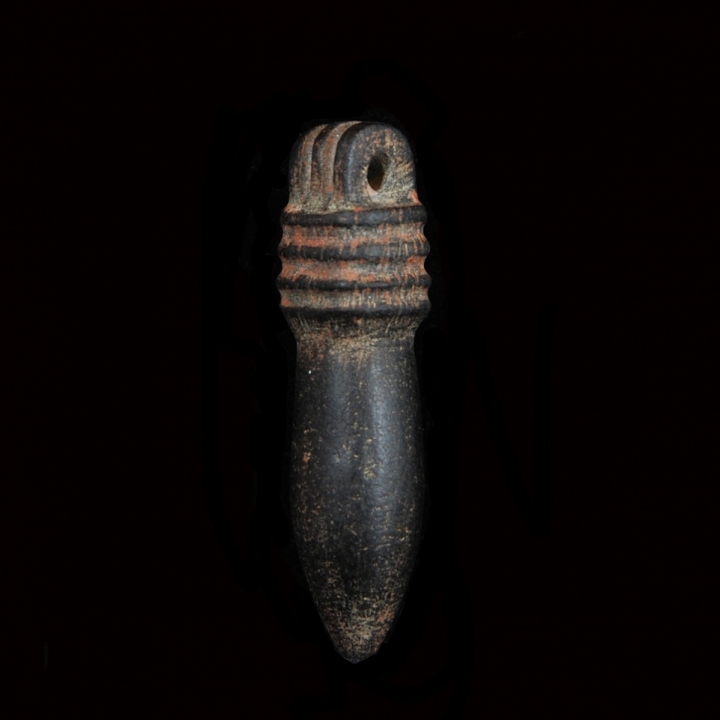Hematite Wadj Amulet
Culture: Egyptian
Period: Late Period, 664-332 B.C.
Material: Hematite
Dimensions: 5.1 cm high
Price: Sold
Ref: 1278
Provenance: Collection Ezeldeen Taha Eldarir, acquired on 15 May 1930 from Salahaddin Sirmali in Cairo and then brought to the USA.
Condition: Of excellent quality.
Description: Rare amulet of grey-black hematite in form of a papyrus sceptre. The head is rectangular with broad shaft flutes, on top a massive, ribbed eyelet for suspension. The amulett is tapering downwards. On the elongataed outer side of the head angularly engraved lines with remains of white and red color. The papyrus stem stands for the word wadj – "to be green, to be young”. The holder of the amulet therefore hopes for everlasting youth. The wadj amulet counts besides the udjat eye and djed pillar as one of the most common mummy amulets and was mostly placed in multiple designs on the mummy. The first known wadj amulet originates from Tutankhamun’s funerary treasures. As soon as it was not exclusively reserved for royal families or priests it became one of the most popular amulets, which was used until the Roman period. Rare form.




